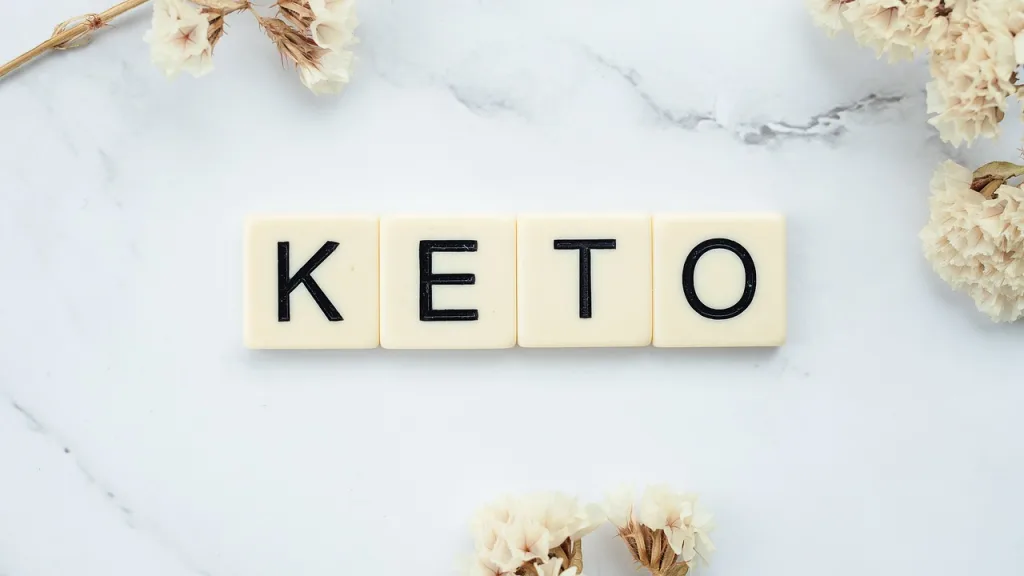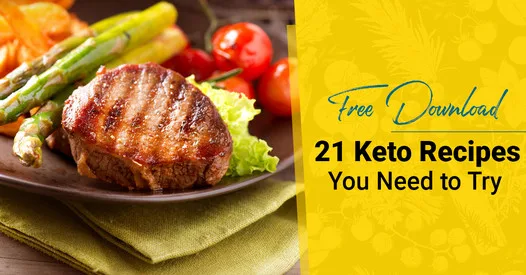Embarking on the Keto diet for weight loss requires a fine-tuned balance of dietary protein and fats. This journey embroils you in a delicate dance of maintaining enough protein to nourish your body while relying heavily on fats for energy. It’s not as scary as it might seem at first. By understanding how to balance these two macronutrients in your Keto diet, you can pave your way to a lighter, healthier you. Now, let’s help you take your first significant step towards successful weight loss with the Keto diet.

Understanding the Keto Diet
The ketogenic diet, or keto diet as it’s commonly known, is a dietary approach that has gained considerable recognition for its potential weight loss and health benefits. It’s essential you understand the basics of this diet before diving in.
Origins and principles of the keto diet
Originally developed as a treatment for epilepsy in the early 20th century, the keto diet has since been adapted as a weight loss and general health strategy. The main principle behind the keto diet is to shift the body’s primary energy source from carbohydrates to fats. This is achieved by drastically reducing your carb intake and significantly increasing your fat consumption.
Health benefits of the ketogenic diet
The ketogenic diet boasts a number of potential health benefits. In addition to promoting weight loss, it may also help manage certain health conditions such as diabetes and heart disease. Some research suggests that it may be effective in reducing the risk of developing certain types of cancer.
Risks and concerns of a high-fat diet
As with any dietary regime, the keto diet comes with its own set of risks and concerns. These include increased risk of nutrient deficiencies, constipation due to less fiber intake, potential heart problems from a high intake of saturated fats, and the challenges of maintaining the diet in the long-term.
The Role of Protein in the Keto Diet
Protein plays a pivotal role in the ketogenic diet, and understanding its importance can make a significant difference to your health and well-being.
Importance of protein for body functions
Protein access a major building block in your body, involved in everything from muscle repair and growth to hormone production. It’s crucial to your body’s functions, and getting adequate amounts is necessary for your overall health.
Protein sources suitable for a keto diet
Given the restrictions on carb-laden foods on a ketogenic diet, finding suitable protein sources can be a bit challenging. Some great keto-friendly sources of protein include meat, poultry, fish, eggs, and certain varieties of cheese.
Consequences of consuming too little or too much protein
Both under-consuming and overconsuming protein can have potential consequences. Too little protein can lead to muscle wastage and weakened immunity, while excess protein can potentially kick you out of ketosis, the metabolic state at the heart of the keto diet.
The Role of Fats in the Keto Diet
fats are the cornerstone of the keto diet. Understanding their role can be critical to making this diet work for you.
Why fats are crucial in a ketogenic diet
In a keto diet, fats serve as your primary energy source, replacing carbs. When your carb intake is limited, your body enters a metabolic state called ketosis, where it starts to burn fat for fuel.
Choosing healthy fats for keto
While fats are key in a keto diet, it’s crucial to choose the right types. Unsaturated fats, like those found in avocados, olives, and nuts, are considered healthy fats. Saturated fats, while not entirely barred, should make up a smaller proportion of your intake.
Possible effects of high fat intake
While transitioning to a high-fat diet may cause short-term side effects such as nausea and headaches, also known as the ‘keto flu’, it may also yield positive results such as enhanced fat loss, reduced hunger, and steady energy levels.
Balancing Protein and Fats for Weight Loss
The crucial aspect of the ketogenic diet is striking a balance between protein and fat intake to optimize weight loss.
Understanding the protein-fat ratio
The typical ketogenic diet aims for a macronutrient distribution of around 70-75% fats, 20-25% protein, and just 5-10% carbs. This ratio might differ slightly depending on your individual needs, but maintaining a higher fat to protein ratio is crucial.
Role of healthy fats and protein in weight loss
Protein helps to minimize muscle loss during weight loss, and a diet high in quality proteins may speed up the metabolism and reduce hunger. On the other hand, fats, being the primary fuel source on keto, can also help suppress hunger.
Practical tips for achieving the right balance
To achieve the right protein and fat balance, focus on moderate protein sources that are also rich in fats, such as fatty cuts of meat or high-fat dairy. Also, monitor your protein and fat intake, adjusting as necessary based on your progress and goals.

Impact of Carbohydrate Restriction
Carb restriction is a key component of the ketogenic diet, and understanding its effects on the body is vital.
The rationale for limiting carbs in keto
The idea behind limiting carbs is to force the body into a state of ketosis, where it must burn fat for fuel since glucose from carbs is in short supply.
What happens to the body in ketosis
Once the body enters ketosis, it starts burning fats stored in the body, leading to weight loss. Moreover, ketosis can lead to reductions in blood sugar and insulin levels.
Importance of fiber and non-starchy vegetables in carb intake
While carbs are restricted, it’s imperative you still get sufficient fiber which is crucial for digestive health. Non-starchy vegetables are low in carbs but high in fiber, making them ideal for inclusion in the keto diet.
Meal Planning and Preparation
Once you understand the keto diet’s principles, planning and prepping your meals become key to your success.
Planning for balanced meals in a keto diet
A successful keto diet requires careful meal planning to ensure you meet your macro-nutritional goals. Each meal should include a good source of protein, plenty of healthy fats, and some low-carb vegetables.
Meal prep tips for high protein and fat meals
To seamlessly incorporate high protein and fat meals, be sure to include a variety of sources to keep things interesting. Also, prep your meals in advance to stay on track.
Incorporating variety while sticking to keto principles
Although targeting specific macros, the keto diet doesn’t require eating the same foods every day. Incorporate different proteins, fats, and low-carb vegetables to ensure you get a broad spectrum of nutrients.

Monitoring and Adjusting Your Keto Diet
Like any diet, the ketogenic diet also needs to be continually monitored and adjusted based on progress and health indicators.
Importance of regular health checks and monitoring progress
Regular health checks and monitoring your progress is crucial to ensure the diet is working for you and not causing any adverse effects.
Signs that may indicate a need for adjustments
Signs such as a halt in weight loss, persistent fatigue, or even health issues may indicate a need to adjust your protein and fat intake or overall diet plan.
How to tweak your protein and fat intake
If you’re not witnessing desired results or facing any adverse effects, you may need to tweak your protein and fat intake. If weight loss stalls, try reducing fat intake slightly while if feeling tired or weak, consider upping your protein consumption.
Exercise and the Keto Diet
Exercise can complement the keto diet in order to optimize results and improve your overall health.
Effects of the keto diet on physical performance
While some studies suggest that the ketogenic diet can enhance endurance exercise performance, others indicate that it might hinder intense, high-impact activities in the initial phase due to reduced glycogen stores.
Optimal types of exercise for those following a keto diet
Low-intensity steady-state exercises like walking, cycling, and swimming can complement the keto diet well. As you adapt, it’s possible to integrate more strenuous resistance and high-intensity interval workouts.
Considerations and adaptations for exercise on a high-fat diet
Exercising while on keto may require dietary modifications such as boosting your calorie intake on workout days or consuming extra electrolytes.

Common Mistakes and How to Avoid Them
Like any diet, people are bound to make some mistakes initially with the keto diet. The key is identifying them and knowing how to avoid them in the future.
Misconceptions about protein and fat intake
One common mistake is not eating enough fats or over-consuming proteins. Remember, proteins should only make up about a quarter of your total calorie intake on keto while fats should make up the majority.
Excessive calorie count despite following keto
Despite following keto, it’s still possible to consume too many calories if you’re consuming large quantities of high-fat and high-protein foods. Even on keto, portion control is essential.
How to identify and correct common keto errors
Keeping a food diary, using a macro tracking app, or consulting with a dietitian can help you identify and correct common keto errors.
Real-Life Success Stories and Case Studies
Behind every diet or health trend, you will find real-life stories of people who have reaped the benefits, and the keto diet is no different.
Success stories of weight loss through keto
Numerous individuals have shed significant weight through the ketogenic diet. These success stories serve as inspiring examples of what is possible with diligent adherence to the diet.
Case studies demonstrating the efficacy of balanced keto
Various case studies reinforce the importance of maintaining balance and adhering to a properly structured ketogenic diet, showing positive outcomes with weight loss and other health indicators.
Inspiration and lessons from those who have succeeded with this diet approach
Real-life success stories provide practical lessons and inspire others to take the leap and adopt the ketogenic lifestyle for a healthier, more vibrant life.

